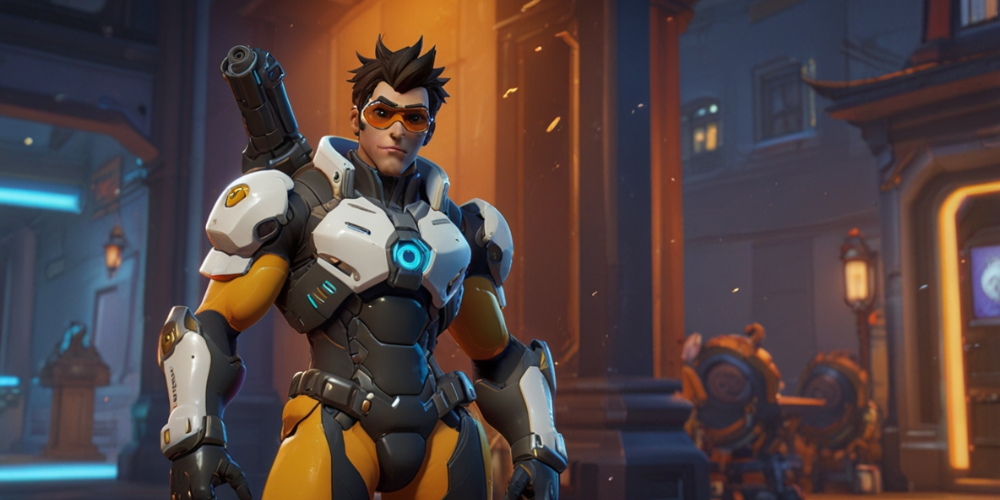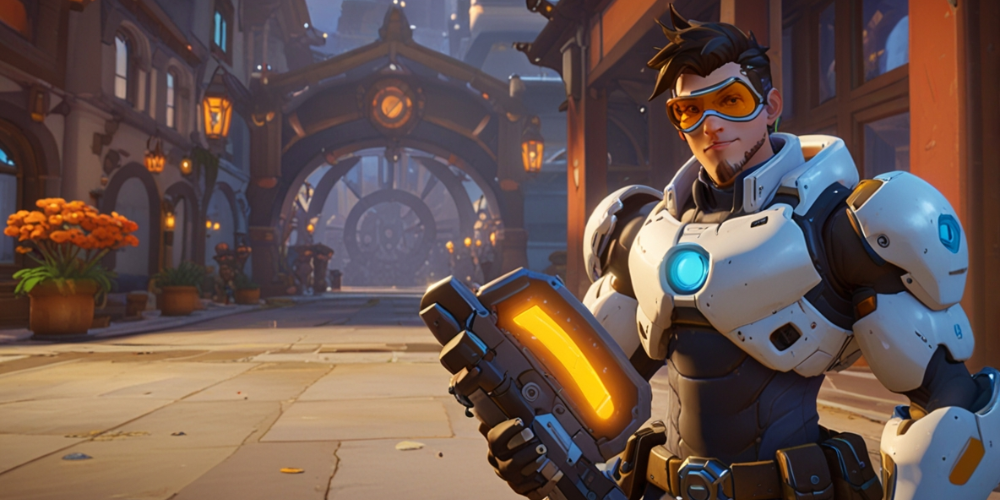
As I delved into the vibrant world of Overwatch, it became clear that understanding character abilities is essential for maximizing gameplay. Each character, or hero, in this team-based first-person shooter brings unique skills to the table, which can significantly impact success in a match.
Embracing the Hero Roles
Overwatch categorizes its heroes into three primary roles: Damage, Tank, and Support. This distinction shapes how players interact with one another and the game's mechanics. When I pick a Damage hero like Reaper or Tracer, my objective is to eliminate opponents swiftly. Conversely, when I choose a Tank such as Reinhardt or Winston, I am tasked with absorbing damage and pushing the front line. Support heroes like Mercy or Zenyatta focus on healing allies and providing buffs, illustrating the diverse contributions each role can make.
Understanding Damage Abilities
Each Damage hero has abilities tailored to enhance their offensive capabilities. For instance, as Tracer, I rely on my Blink ability to zip around the battlefield, striking at the enemy and escaping before they catch on. Experiencing the adrenaline rush as I dodge attacks while dishing out damage feels absolutely exhilarating. With Reaper, I appreciate the power of his Death Blossom, which unleashes a devastating area-of-effect attack, punishing unsuspecting enemies clustered together.

The Impact of Tank Heroes
Tank heroes act as shields for the team, and understanding their abilities is crucial. I found Reinhardt’s Barrier Field to be a game-changing ability, allowing me to absorb a significant amount of damage for my teammates while pushing forward. Deploying this ability effectively requires great timing and positioning, and mastering it makes me feel like a leader on the battlefield. When I role-play as Winston, his Primal Rage ability transforms him into an unstoppable force, allowing me to initiate fights or disrupt enemy formations.
Support Heroes: The Unsung Heroes
Support heroes are often underrated, but their abilities can turn the tide of battle. When I play Mercy, her Resurrect ability offers a lifeline to teammates, and there's nothing more satisfying than reviving a fallen comrade in the heat of battle. The feeling of strategic teamwork is palpable in those moments. Additionally, Zenyatta’s Transcendence ability grants invulnerability, making it a key tool during crucial moments in a match.
Combining Abilities for Strategy
The true beauty of Overwatch lies in the synergy between heroes. As I learned more about the various characters, I began to appreciate how abilities complement one another. When I coordinate with a Mei who can trap opponents in her Blizzard ultimate, my Reaper can swoop in for the perfect ambush. There’s an exhilarating satisfaction in executing a well-coordinated attack, especially when everyone brings their unique skills together.

The Importance of Positioning
Regardless of the hero I choose, positioning remains a critical aspect of gameplay. As a Damage hero, being aware of flanking routes allows me to surprise enemies and secure kills. For Tank heroes, positioning myself in front of my Support players ensures they remain safe while I absorb enemy fire. Playing Support, I have to stay near my allies without putting myself in harm’s way. It’s a balancing act that takes practice and experience.
Map Awareness and Ability Utilization
The diverse maps in Overwatch also affect character abilities in profound ways. For instance, playing Pharah in a map with high verticality allows me to leverage her jetpack to rain down rockets from above. Learning which heroes excel on specific maps has been a crucial part of my growth. On Lijiang Garden, I’ve found that mobility heroes thrive since they can take advantage of the environmental features, while heavy hitters may struggle.
Ultimate Ability Timing
Each character possesses an ultimate ability that can turn battles around if used correctly. I’ve come to realize that mastering the timing of these abilities is vital. When I play as Genji, I must be aware of my team’s positioning before activating my Dragonblade. I’ve witnessed games swing in favor of one team simply because someone was too hasty with their ultimate. Learning to hold back and pick the right moment is an ongoing journey for me.

Countering Opposing Heroes
To truly understand abilities, I’ve had to learn about opposing heroes as well. Identifying counters is part of strategic gameplay. For example, when I see a Roadhog on the enemy team, my first instinct is to avoid close combat, opting for long-range heroes like Hanzo. Similarly, if the enemy has a skilled Widowmaker, I find high mobility characters like Winston or Tracer particularly useful to close the gap and take her out.
Adapting to Team Composition
Monitoring team composition is significant when choosing a hero. I’ve found that if the team is low on damage, playing a Damage hero can be rewarding. However, if we are lacking in protection, switching to a Tank or Support is sometimes necessary. Flexibility in hero selection not only enhances my experience but also contributes positively to overall team dynamics.
The Art of Communication
Effective gameplay in Overwatch hinges on communication with the team. When I voice my plans, whether that’s calling for support when initiating an attack or alerting teammates to enemy ultimates, it can mean the difference between victory and defeat. Using voice chat or quick comms helps keep my team informed about crucial moments, leading to better execution of abilities.
Learning from Mistakes
No one is perfect in Overwatch. Learning from mistakes has been part of my journey. I’ve experienced countless matches where poor positioning or lack of ultimate timing led to defeat. Reflecting on those moments and understanding what went wrong has allowed me to adapt and grow, strengthening my gameplay in the long run.
Resource Management: Health Packs and Abilities
Resource management extends beyond just health points. Understanding the location of health packs on the map has aided my survival rate. In moments of desperation, knowing where to retreat for healing has saved my life, allowing me to rejoin my team stronger. Additionally, managing ability cooldowns effectively has become second nature; using abilities at critical times is essential for achieving objectives.

Engaging in the Community
Engaging with the Overwatch community has been invaluable. Platforms like forums and social media have exposed me to strategies and tricks that I might not have discovered on my own. Watching skilled players on streaming platforms has also taught me advanced techniques and strategies that I’ve been able to incorporate into my gameplay.
Character Skin and Customization as a Reflection of Skill
While the skins don’t affect gameplay, they represent my dedication to certain heroes. When I earn a legendary skin through gameplay, it feels like a personal achievement. Customizing my character isn’t just about aesthetics; it's about showing my favorite heroes’ distinct abilities and my journey with them.
Understanding the Meta Game
Staying attuned to the evolving meta is yet another layer of complexity. As balancing patches are introduced, certain heroes can rise or fall in popularity and effectiveness. This shift requires me to stay informed and adapt my playstyle based on which heroes are currently strong. An awareness of the current meta enhances my gameplay, ensuring I remain competitive.
The Continuous Learning Curve
The world of Overwatch is always evolving, presenting a continuous learning curve. From mastering a new hero’s abilities to adapting strategies as the game updates, there’s always something new to explore. This journey of understanding character abilities has been a fulfilling one, enhancing my appreciation for the rich tapestry of Overwatch and the dynamic battles within it.


